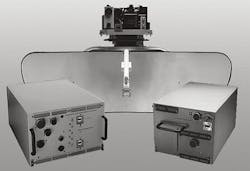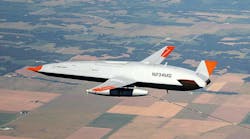DHS officials announced a plan Wednesday to award a sole-source contract to Raytheon for as many as 20 of the company's SeaVue maritime surveillance radar systems, as well as spare parts and subcomponents. The value of the upcoming contract has yet to be negotiated.
The SeaVue family of radars is designed to detect small maritime targets in high seas and provide superior sea search mode performance. The radars offer inverse synthetic aperture radar imaging of ocean targets and a weather detection and avoidance mode.
SeaVue radars are operational in several countries on the Hawker 800, de Havilland Dash-8, Caravan II, and ATR-42 aircraft, as well as on the U.S. Customs and Border Protection's Guardian unmanned aerial system, Raytheon officials say.
Related: Raytheon integrates SeaVue radar and MTS aboard Predator UAV
SeaVue is a X-band radar based on the Raytheon AN/APS-137 for light fixed winged aircraft. SeaVue is a modular design that is upgradable, with three line-replaceable units. The radar also plays a role in overland surveillance with its synthetic aperture radar mode designed to supplement the maritime mission.
More than 150 Raytheon SeaVue radars are operational worldwide, including the U.S., Japan, Mexico, Italy, Australia, the United Kingdom, Thailand, Norway, Pakistan, and Taiwan, according to Raytheon.
Last fall Raytheon demonstrated the SeaVue Expanded Mission Capability (XMC) in Australia on a Dash-8 aircraft in coordination with the Australian Customs and Border Protection Service.
Related: Japanese search-and-rescue planes will use Raytheon radar
The SeaVue XMC maritime surveillance radar can detect, track, and sort thousands of maritime targets simultaneously. The tests showed the SeaVue's ability to provide medium- to high-altitude persistent surveillance in broad maritime areas; track high-density traffic with fast contact discrimination; reduced operator workload; and integration with other aerial surveillance assets.
Raytheon's SeaVue XMC is currently operational on the U.S. Customs and Border Protection Dash 8 and the P-3 aircraft.
For more information contact Raytheon Space and Airborne Systems on line at www.raytheon.com, or the Department of Homeland Security at www.dhs.gov.



